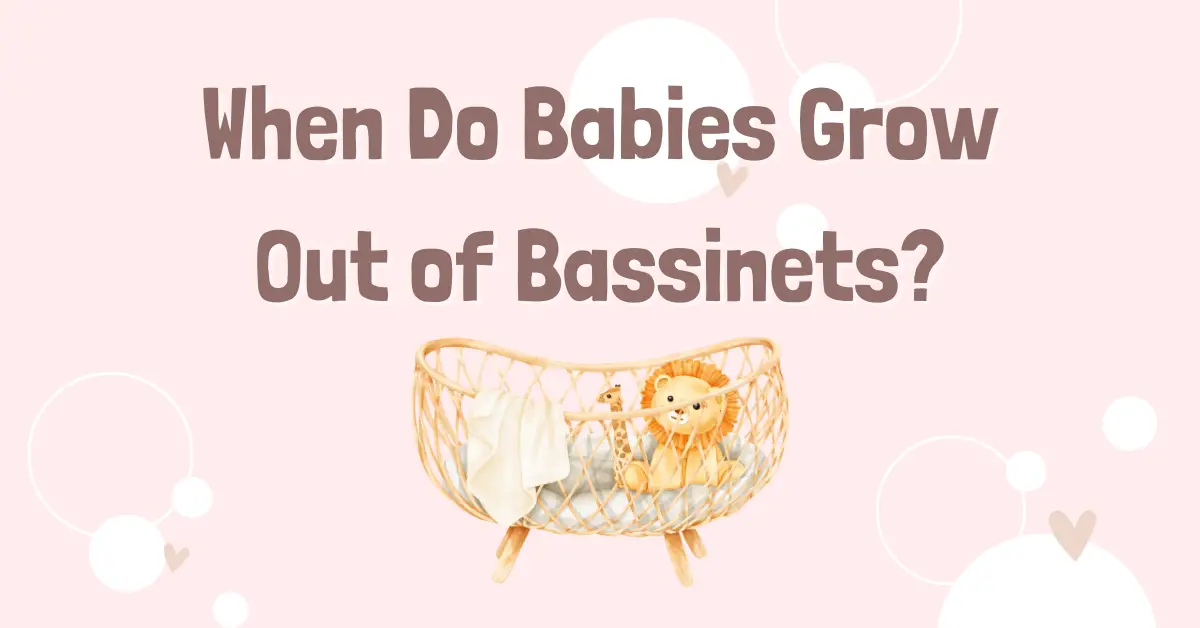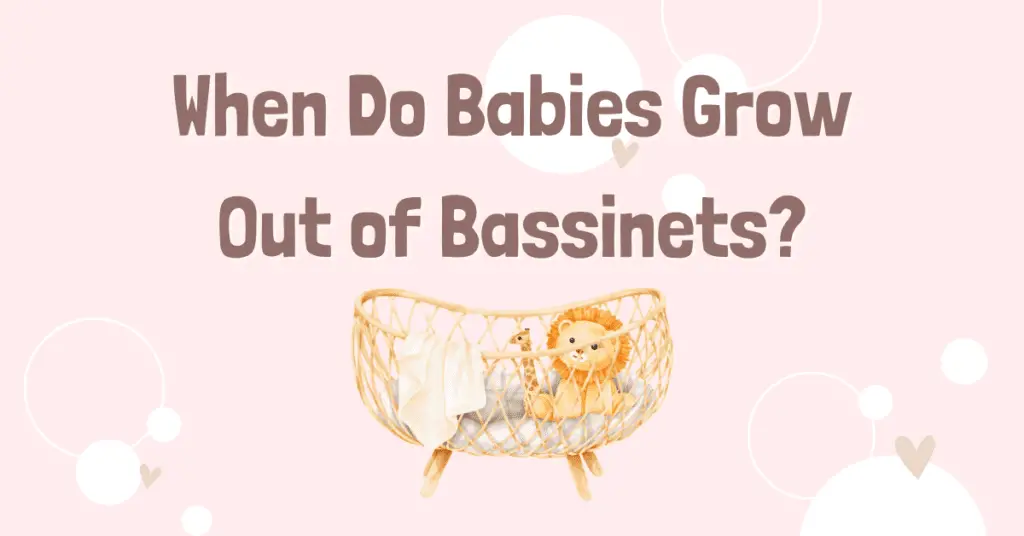
Congratulations on welcoming a little bundle of joy into your life! As every parent soon discovers, there’s a lot to learn when it comes to caring for your new arrival. One of the foremost concerns, of course, is ensuring a comfortable and safe sleeping space. Bassinets are often the top choice for many parents in the first few months. But when is the right time to move on from them? We’re here to help guide you through the process.
The Purpose of a Bassinet
These compact and cozy sleepers have been a favourite for newborns and young babies for decades. Their snug design can help your baby feel safe and secure, almost like being wrapped in a gentle embrace, reminiscent of their time in the womb.
Bassinets are not just about comfort – they’re also about convenience. They’re portable, allowing parents to keep their baby close, especially during those early days when nighttime feedings are frequent. Their design is such that you don’t have to reach down far to lift your baby out – a feature especially appreciated by moms recovering from childbirth.
Now, while bassinets are wonderful, babies grow and change rapidly. Just like you wouldn’t keep them in newborn-sized onesies forever, you’ll need to think about when it’s time for their sleeping arrangements to grow with them.
In the sections that follow, we’ll offer some friendly pointers to help you recognize when that transition from bassinet to crib or another sleeping space might be on the horizon. Remember, every baby is unique, so these are guidelines and suggestions. Always consider what feels right for your little one and your family.
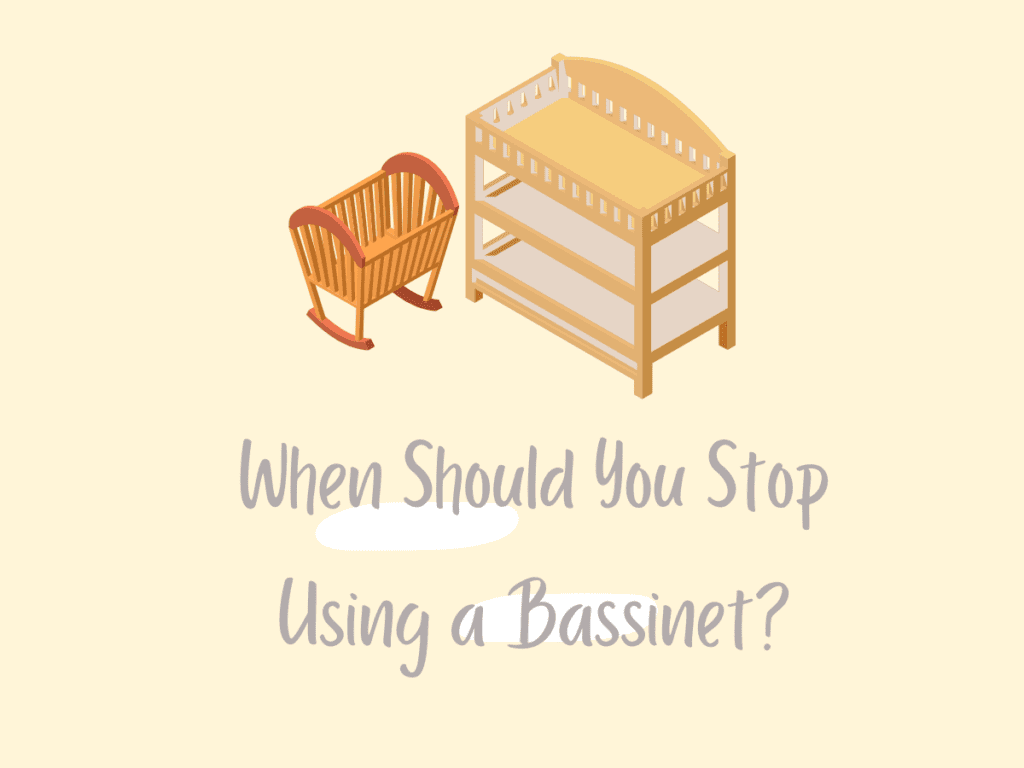
When Should You Stop Using a Bassinet?
Typically, pediatricians and child safety experts offer general recommendations based on age or weight. However, just as adults have their own comfort preferences – like some of us are totally fine in a compact car, while others prefer the spaciousness of an SUV – babies too have their unique comfort zones.
That said, a few pointers can help you gauge the right time:
- Developmental milestones: As your baby becomes more active, you might notice them starting to roll, push up, or sit. Once these movements become frequent, a bassinet might not offer enough space or safety.
- Size and comfort: If your baby seems to be touching both ends of the bassinet or if their once spacious haven now appears a bit snug, it might be a nudge to start considering a larger sleep space.
- Rest and wakefulness: Babies will have varied sleep patterns, but if you notice your baby is unusually restless, wakes up frequently, or has difficulty settling in their bassinet, it might be an indication they’re ready for a change.
Now, these are just guidelines. You might decide to make a switch sooner or later based on your observations and instincts. And that’s perfectly fine! Trust in your journey and know that every decision you make comes from love and the best intentions for your little one.
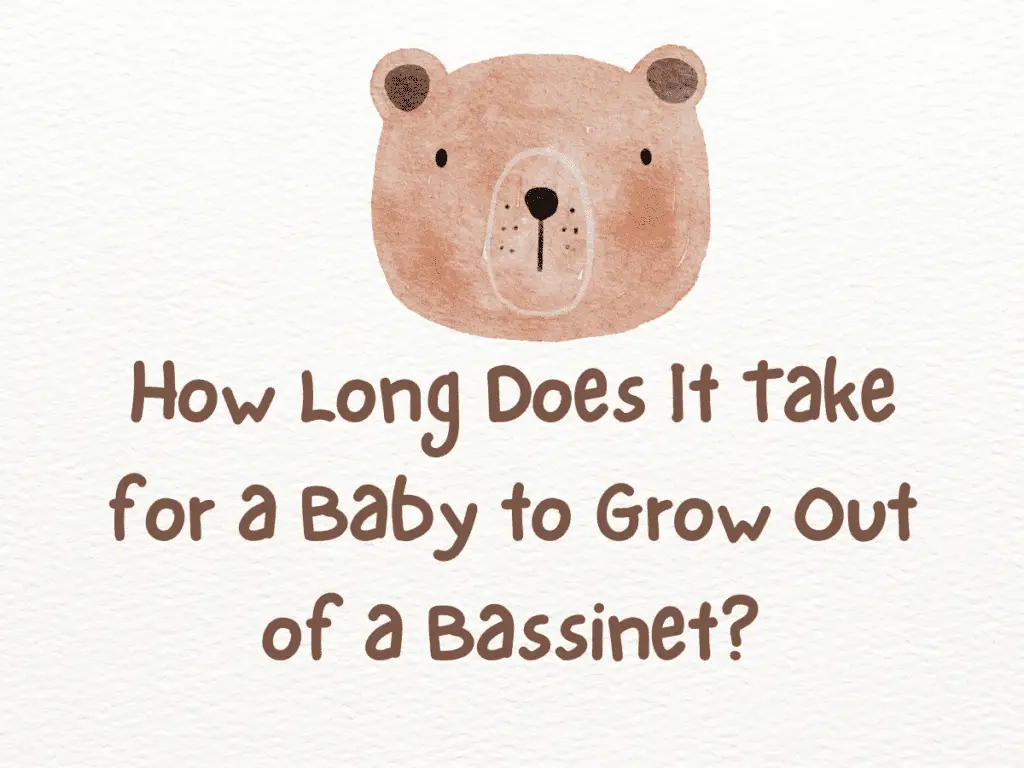
How Long Does It Take for a Baby to Grow Out of a Bassinet?
When you first set up that adorable bassinet, it can be hard to imagine your tiny newborn ever outgrowing it. But, babies have a knack for surprising us with how quickly they change and develop!
On average, many parents find that their babies are ready to transition out of the bassinet somewhere between 3 to 6 months. Here’s what you might notice around these ages:
- Growth spurts: Babies often have growth spurts in the early months. You’ll notice they might be hungrier, sleep more, and yes, suddenly look like they’ve outgrown their clothes—and possibly their bassinet.
- Activity level: Around the 3-6 month mark, many babies begin to roll, wiggle, and push up more. As they become little movers and shakers, they’ll likely crave more space to stretch and move.
- Sleep patterns: As babies grow, their sleep patterns evolve. If your little one seems more restless in the bassinet or their nighttime stretches become longer, they might appreciate a more spacious sleeping arrangement.
These are general observations, your baby might be perfectly content in their bassinet for a longer period, or they might show signs of readiness for a bigger space earlier on. Just as every adult has their favourite comfy sweater or blanket, babies too have their own unique preferences. It’s all about tuning into your baby’s cues and feeling confident in your choices. After all, no one knows your baby quite like you do!
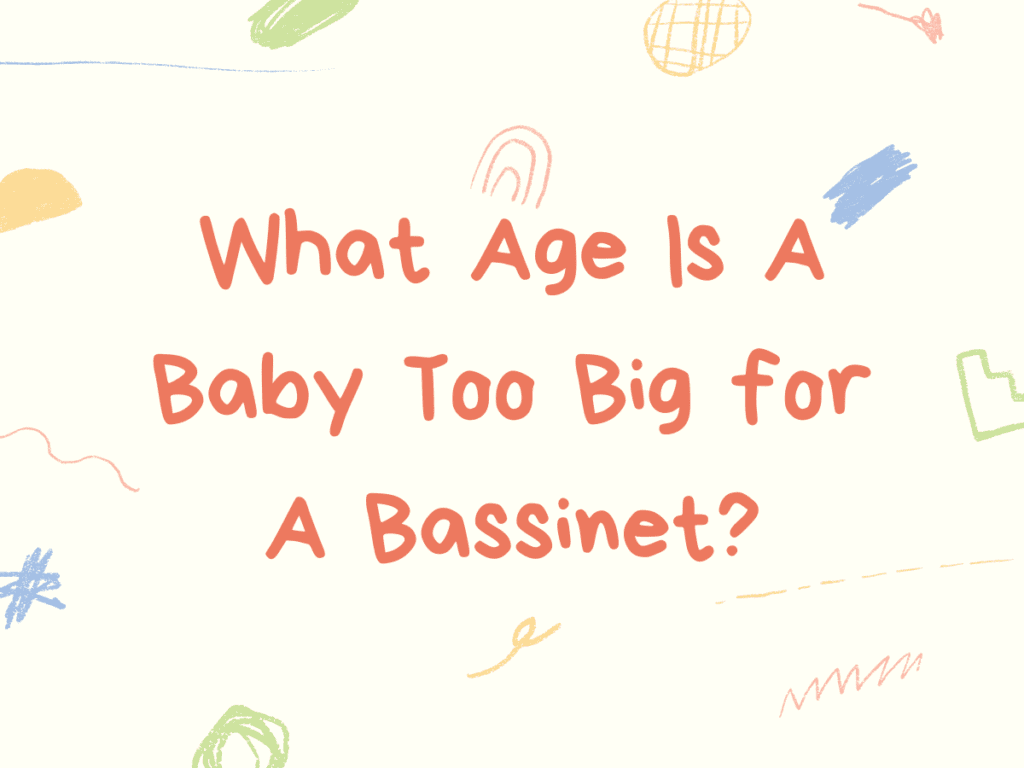
What Age Is A Baby Too Big for A Bassinet?
It’s a question many new parents ponder: At what age is my baby officially too big for the bassinet? While we’ve touched on the 3 to 6-month range, it’s essential to stress that age isn’t the only factor to consider. Still, it can serve as a helpful starting point for many parents.
Age as a Guideline:
Many bassinets are designed to accommodate babies up to about 6 months old but this isn’t a hard and fast rule. Some little ones might be ready for a transition sooner, while others might be perfectly content a little longer.
Development Over Calendar Months:
More than the number of months on the calendar, it’s your baby’s physical and developmental progress that offers the most insights. Is your baby trying to sit up or roll over? Such milestones can give you clues about their readiness for a new sleep space.
Comfort and Space:
Age also ties in with size and comfort. If by 4 or 5 months, you notice that your little champ seems cramped or tends to hit the sides of the bassinet often, it might be their gentle way of saying, “Hey, I could use a bit more room here!”
Ultimately, while age can be a helpful marker, it’s the combination of your baby’s development, size, and behaviour that paints the clearest picture. And as always, you’re the expert when it comes to your child. Trust your instincts, observations, and the unique rhythm of your family. Every transition, big or small, is a testament to the wonderful journey you’re sharing with your little one.
Weight Restrictions: Knowing When to Transition
Just like that sticker on the side of your trusty ladder warning you about the weight limit, bassinets too come with their own set of recommendations concerning weight. These aren’t just numbers to gloss over; they’re pivotal for your baby’s safety.
Manufacturer’s Guidelines
Always start by checking the weight recommendations provided by the bassinet’s manufacturer. While the exact number can vary, many standard bassinets have a weight limit of around 15 to 20 pounds.
Why Weight Matters
The weight limit isn’t just about preventing the bassinet from tipping over. As babies grow heavier, the bassinet’s base might not offer the same level of support, which can lead to an uneven sleeping surface.
Observing Your Baby
Apart from the number on the scale, pay attention to your baby’s movements. If they seem to shift the bassinet’s position with their wiggles or if the bassinet sways a bit too much with their motions, it could be an indication that they’re outgrowing it.
Keeping Safety First
While we all love getting the most out of products we invest in, it’s essential to prioritize safety over prolonged use. If your baby is nearing the recommended weight limit or if the bassinet seems less stable, it might be time to think about transitioning to a crib or another suitable sleep environment.
As you’re making the decision on when to transition from a bassinet to a crib, it’s always a good idea to have a chat with your pediatrician or a child safety expert. They can provide valuable insights tailored to your baby’s specific needs. And as always, trust your intuition. It’s one of the most powerful tools you have as a parent.
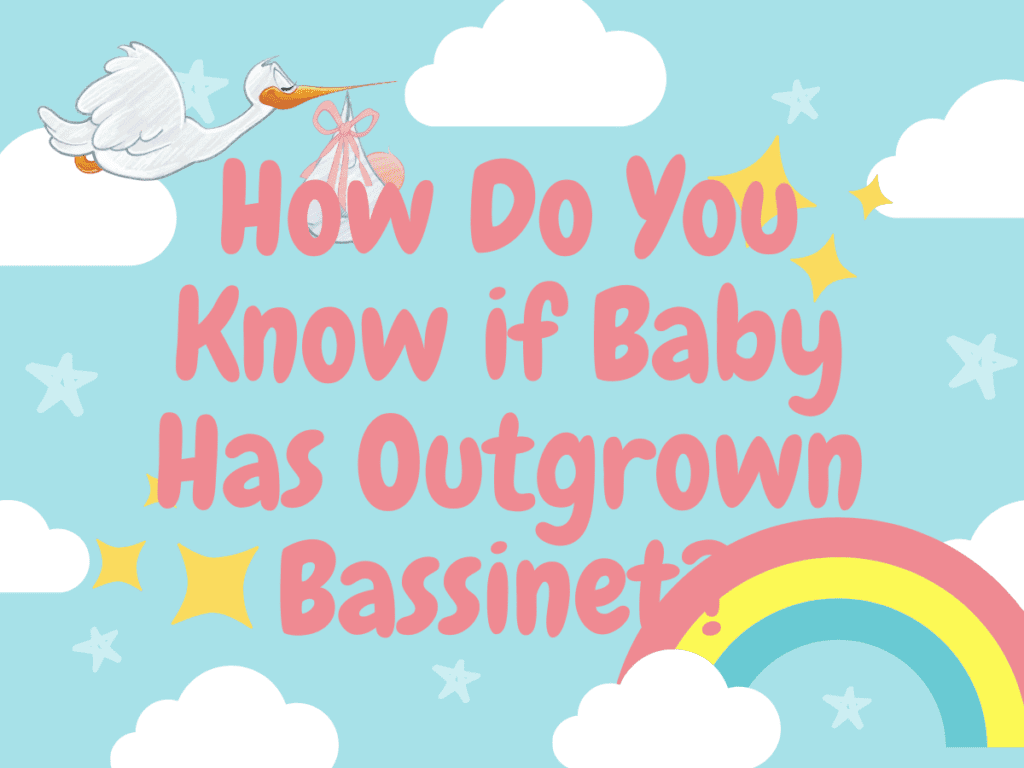
How Do You Know if Baby Has Outgrown Bassinet?
Just as a plant might outgrow its pot or we outgrow a favourite pair of shoes, babies too will outgrow their first sleep spaces. But without clear growth rings like a tree, how can you be sure your baby has outgrown their bassinet? Let’s explore some signs to watch for:
Physical Signs
- Space: If it seems like your baby has less room to stretch out or if their arms and legs seem constricted, that could be a hint.
- Ends of the Bassinet: If your baby’s head or feet touch either end of the bassinet consistently, it might be getting snug in there.
Behavioural Signs
- Restlessness: Is your once peaceful sleeper now frequently waking up, looking uncomfortable, or struggling to find a cozy position? Their discomfort might stem from feeling restricted.
- Settling Difficulties: If your baby, who previously had no trouble, now struggles to settle down in their bassinet, it might be because they feel cramped.
Developmental Milestones
- Movements: As your baby begins to roll or attempts to push up on their hands, they require more space to safely explore these newfound skills. If they’re showing signs of these activities within the bassinet, it’s a strong indicator that a change is needed.
Listening to Your Baby
Babies have their way of communicating, even without words. Their behaviour, movements, and even their cries can provide insights. Tune in and observe; they might just be telling you they’re ready for a change.
Can Baby Sleep in Bassinet if Rolling Over?
One of the thrilling moments in a baby’s early life is witnessing those first attempts at rolling over. It’s an incredible developmental milestone, indicating growing strength and mobility. However, this new skill brings up an important question about sleep safety.
Rolling Over and Bassinet Safety
Bassinets are designed for younger babies who typically aren’t moving around much. Once your baby starts to roll, the confined space might not offer enough room for them to safely adjust their position.
The Risks
If a baby rolls over in a bassinet, there’s a potential risk of them getting stuck against the side, leading to breathing difficulties.
Babies at the rolling stage are also more active and curious, meaning they might try to pull or push against the sides, posing a tip-over risk.
What To Do When Your Baby Starts Rolling
It’s generally recommended to transition your baby to a more spacious sleep environment once they start showing signs of rolling, like a crib. Cribs offer more space for movement, ensuring that your little roller can adjust and find a comfortable position safely.
Your Baby’s Safety Comes First
While it might be tempting to get a bit more use out of that bassinet, it’s crucial to prioritize your baby’s safety. Think of this transition as an exciting new chapter, a testament to your baby’s growth and development.
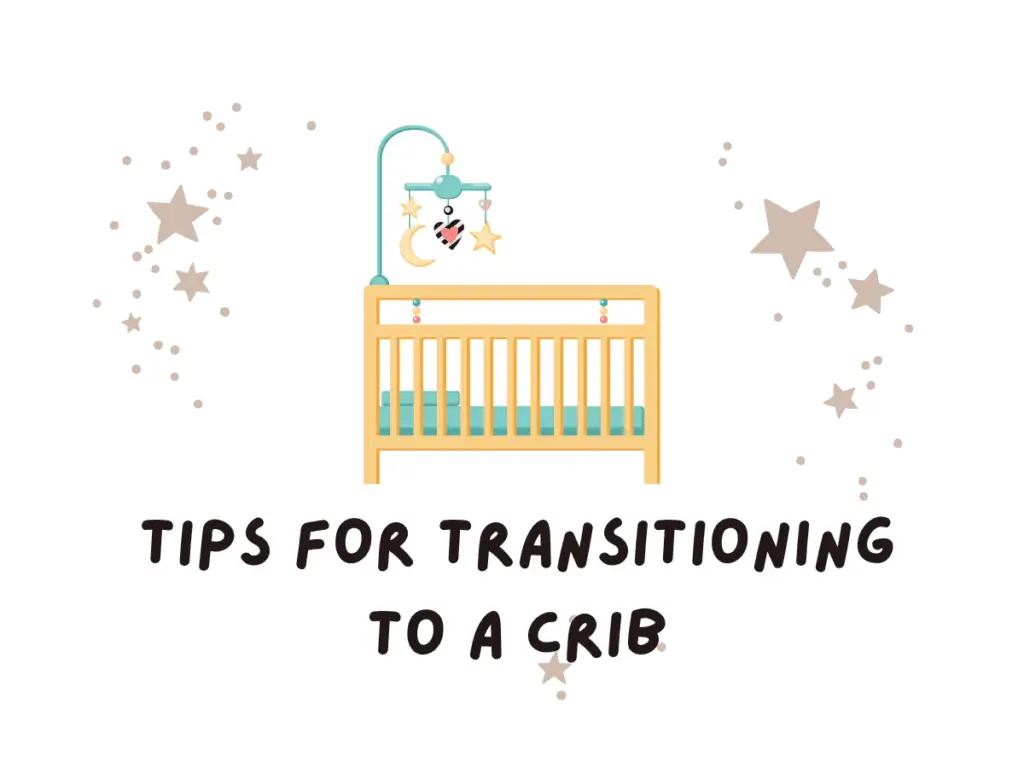
Tips For Transitioning To A Crib
Alright, so you’ve identified that your baby might be outgrowing their bassinet. What’s the next step? Transitioning from a bassinet to a crib or another sleep space can be both exciting and a tad bittersweet. But, with a few helpful hints, you can make this shift as smooth as possible for both you and your baby.
Preparing the New Sleep Space
- Safety First: Ensure the crib or alternative sleeping space meets the latest safety standards. A firm mattress that fits snugly within the crib, without any gaps, is a good start.
- Familiar Surroundings: Consider introducing some elements from the bassinet, like a favourite blanket (once safe to do so) or a soft toy, to make the new environment feel familiar.
Easing Into the Transition
- Test Runs: Before making a full transition, let your baby take short naps in the new sleep environment. This can help them get used to the space.
- Stay Consistent: Once you decide to switch, try to keep other elements of the bedtime routine consistent to provide familiarity.
Your Presence is Comforting
- Reassurance: In the early days of the transition, spending a little extra time with your baby during bedtime can offer comfort. Gentle touches, soothing voices, or even a lullaby can reassure them that they’re safe and loved.
Flexibility is Key
- Baby’s Pace: Every baby will react differently. Some might adjust to the new setting overnight, while others might need a bit more time. Remember, it’s okay to take things at your baby’s pace. If it seems they’re not ready, give it a few days and try again.
Seeking Guidance
- If you’re ever unsure about the transition or if your baby seems particularly unsettled, don’t hesitate to reach out to your pediatrician or a child sleep expert. They can offer personalized advice and guidance.
Final Thoughts on the Transitioning From A Bassinet
The journey from using a bassinet to transitioning to a crib is one of the many paths you’ll navigate as a parent. Like all the stages of your baby’s life, it’s fleeting, filled with learning moments, memories, and above all, love.
Key Points:
- Trust Yourself: Every child is unique, and so is every parenting experience. Trust in your understanding of your baby’s needs and your instincts.
- Seek Support: Parenting isn’t meant to be a solo journey. Whether it’s advice from fellow parents, pediatricians, or childcare experts, don’t hesitate to seek insights when needed.
- Celebrate Milestones: While it might feel a tad emotional moving away from the bassinet phase, it’s also a milestone worth celebrating. Your baby is growing, exploring, and each day brings something new.
Best of luck getting a good night’s sleep!

